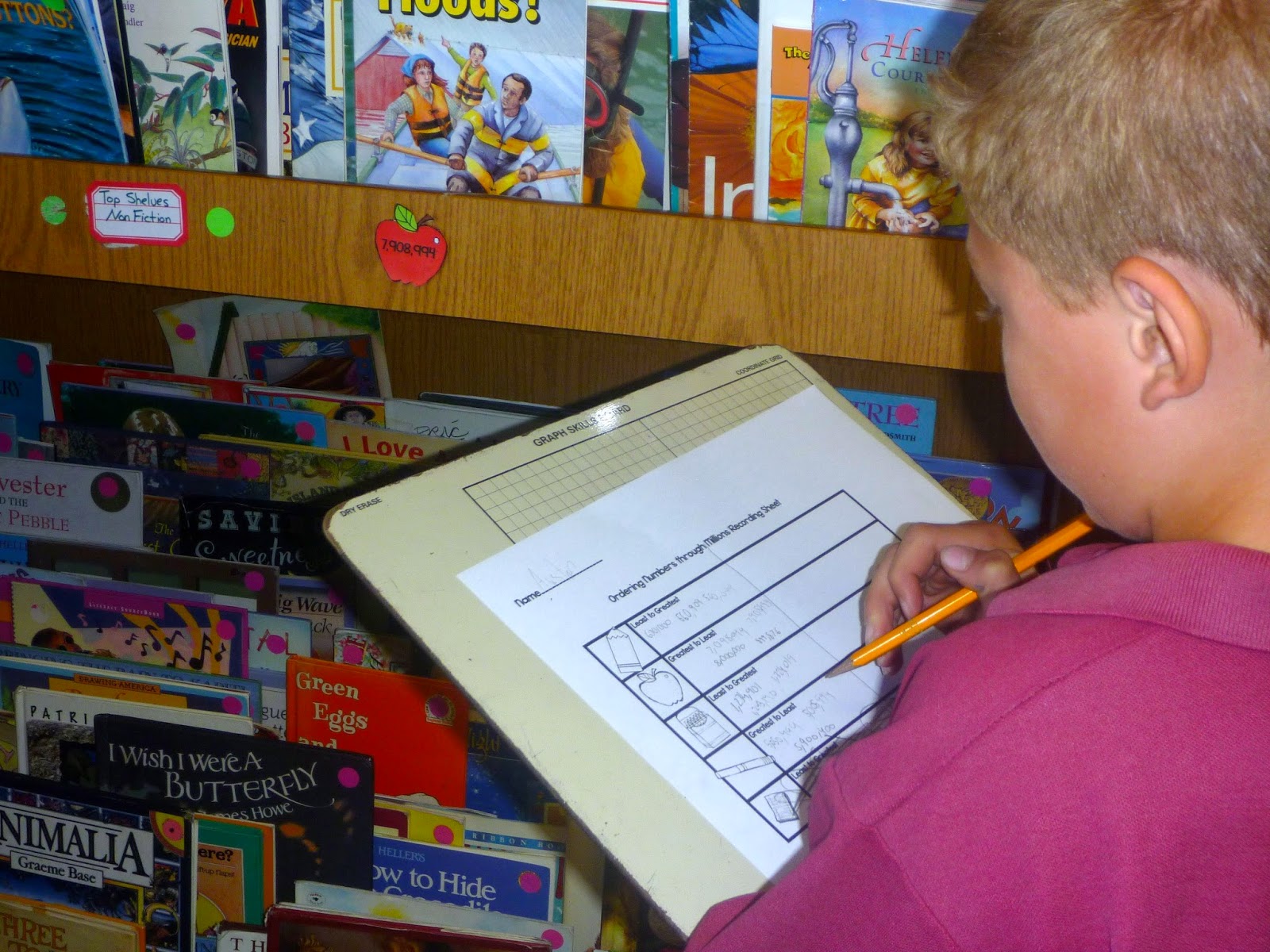Because of this, I started using Math Around the Room more and more. It helped my active minds to focus as they got to move around while doing work without being disruptive. And I also discovered that it was great for my other students as well. This year, I don't have as many fidgeters, but I still am using this kind of activity all the time. It just breaks up the day more, and refreshes all students. They all enjoy it, and are able to work on the assigned problems very quietly and with no classroom management problems.
What is Math Around The Room?
It is simple:
1) Take the worksheet problems you want your students to work on.
2) Cut them up
3) Post them in various places around the room (on chairs, by the library, on the counter, by the backpacks etc.)
4) Students walk around the room with a clipboard and recording sheet, moving around and solving the problems.
In my class, this may only be done silently. If students are having a hard time and are getting distracted by their peers, they have to work by their desk while everyone else gets to cycle the room. Because they really enjoy Math Around the Room, this is all the reinforcement they need, and they work quietly on their activity.
This can be used for any subject and most activities. I tend to use it most for Math, for the simple reason that we need to practice math skills in the form of a worksheet more often than other subjects.
Here are some pictures of my students doing this:
 In these three pictures, we were doing Math Around the Room for ordering big numbers. This is a free product that can be found on tpt. I posted 4 pencils, 4 apples, 4 markers etc. around the room. Students had to find all of them, and then put them in order, either from least to greatest or greatest to least. A lot of my students were already great at ordering numbers, but some needed extra support. This activity allowed me to work with a few students one on one, while the rest of the class was engaged and thinking, as opposed to bored at doing something they already knew how to do.
In these three pictures, we were doing Math Around the Room for ordering big numbers. This is a free product that can be found on tpt. I posted 4 pencils, 4 apples, 4 markers etc. around the room. Students had to find all of them, and then put them in order, either from least to greatest or greatest to least. A lot of my students were already great at ordering numbers, but some needed extra support. This activity allowed me to work with a few students one on one, while the rest of the class was engaged and thinking, as opposed to bored at doing something they already knew how to do.
Because I liked this activity so much, I decided to create my own for math facts, since such a product did not exist. It is up for purchase at my store, and can be found here.


Again, students really enjoyed this activity and were able to quietly practice their math facts, while I had the opportunity to work with a few students who were struggling (particularly with their division facts).
"________ Around the Room" is definitely something I would recommend for your classroom. It is life-saving for our friends with ADHD, but fun and useful for the entire class as well. You should try it out!
http://www.teacherspayteachers.com/Product/Diving-into-Math-Facts-Math-Around-the-Room-Multiplication-and-Division-1430295


















